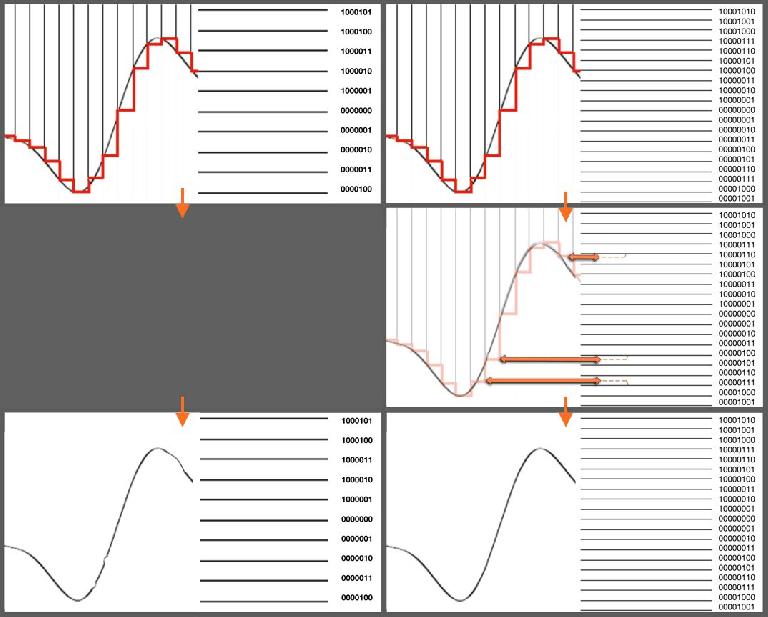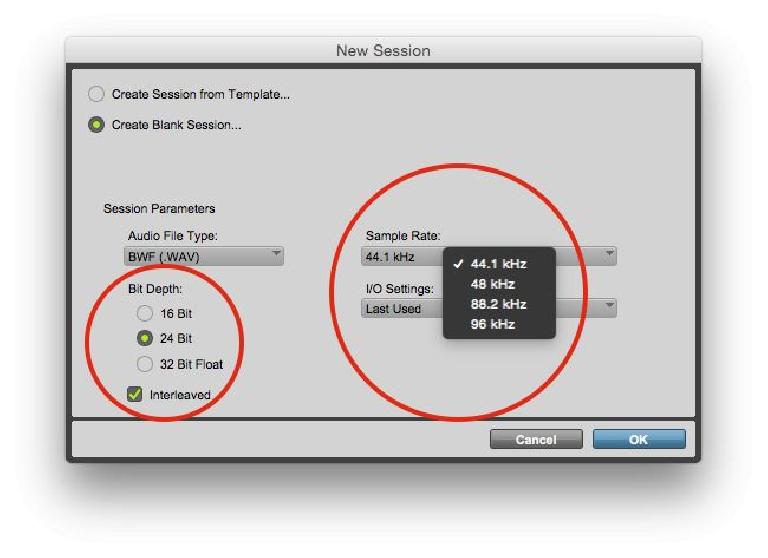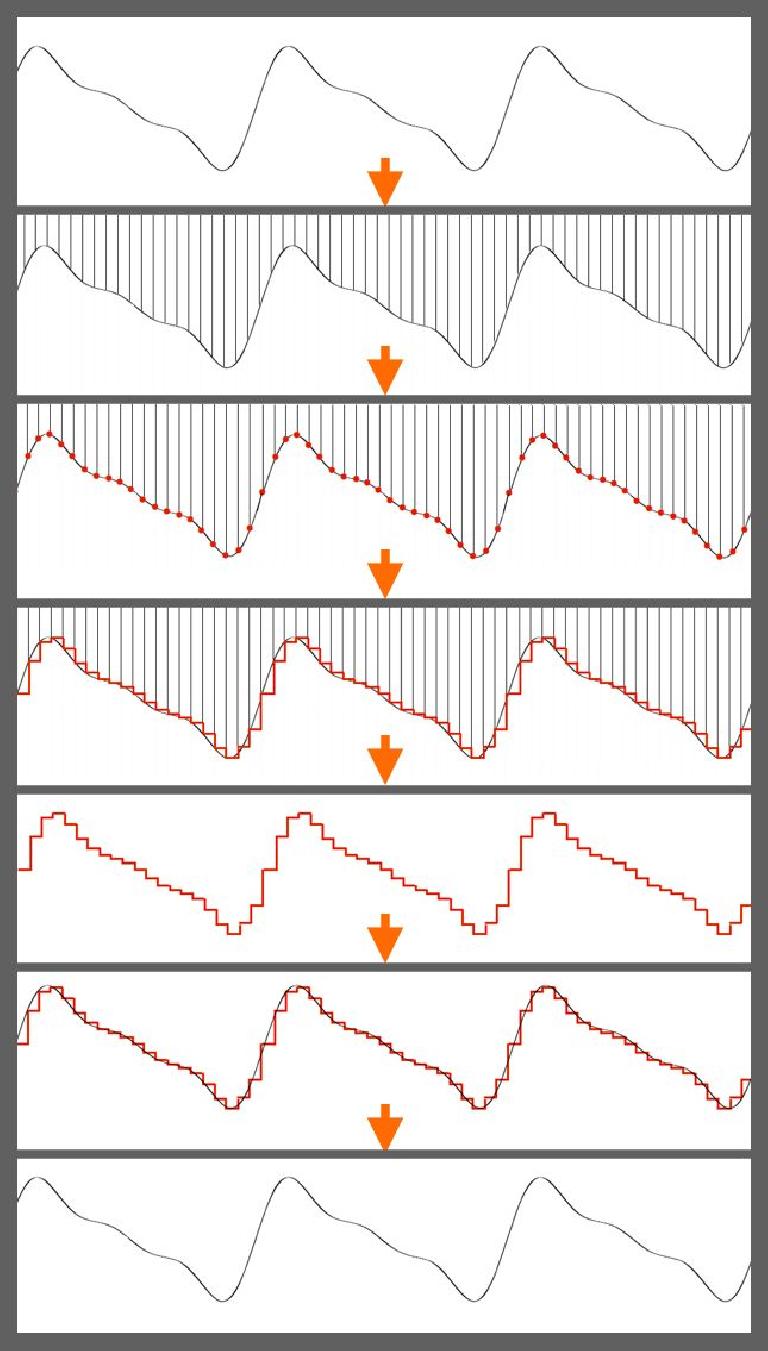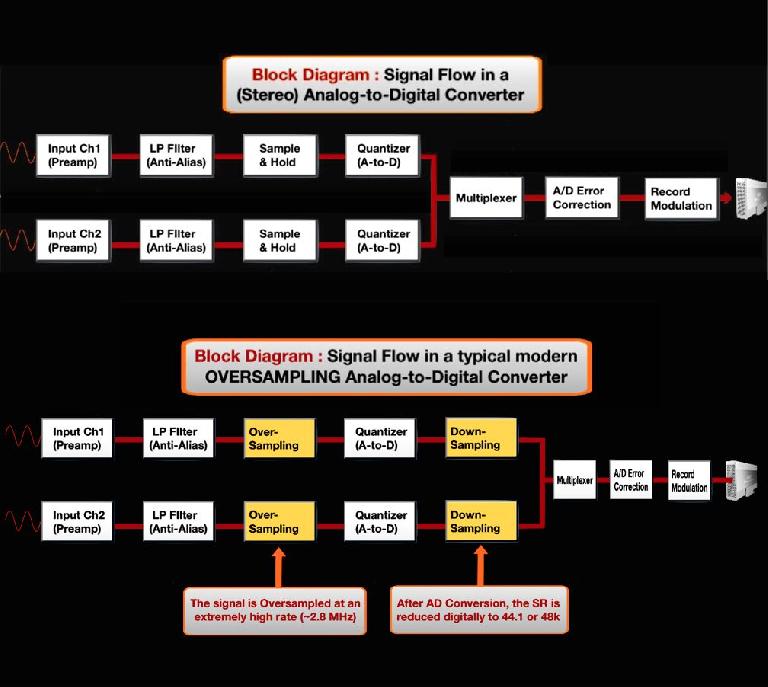Uno de los debates más polémicos en los centros de la industria de audio alrededor de resolución de audio digital. Es con calidad de CD todavía lo suficientemente bueno, o debería todo el sonido digital de adherirse a las opciones de mayor resolución que ahora están disponibles? Ok, spoiler alert
The (Very Simplified) Basics
Los dos puntos de referencia de la calidad de audio digital son la frecuencia de muestreo y resolución de bits. Baja frecuencia de muestreo
Durante años, se estandarizaron los dos puntos de referencia. CD
Please Sir, May I Have Some More..
Pero si la norma original (s) se reunió (al menos perceptualmente) los requisitos teóricos, por eso el llamado a resoluciones más altas? ¿Es realmente necesario hacer uso de las Resoluciones de bits más altos disponibles en la actualidad
A Bit of This, a Bit of That
En primer lugar, la parte fácil
Sin embargo, la diferencia no es tan grande como se podría esperar
Y sin embargo, todo el mundo (por lo menos todos los pros) ficha 24 bits! ¿Por qué? Bueno, creo que la respuesta es, ¿por qué no? Resolución de 24 bits doesn
Pero ¿qué pasa con todos los rumores respecto
Sample This
Cuando se trata de los más altos disponibles Muestreo Precios (88.2k, 96k, 176.4k, 192k), hay
Teoría de audio digital es en realidad muy elegante
Sin embargo, para lograr esto sin un artefacto audible
Convertidores digitales modernas tienen, desde hace años, en realidad muestreado a tasas mucho más altas, hace tiempo que elimina la necesidad de esos filtros brickwall problemáticos. Sin embargo, la frecuencia de muestreo del archivo de audio digital resultante aún puede ser 44.1k o 48k, porque las frecuencias de audio más altas muestras
Pero cuando usted hace una grabación de 96k, que
The Ultrasonic Conundrum
Bueno, esta es una de esas áreas en las que la gente buena
Golden Ears..?
Mediciones de prueba puede
Wrap-Up
En última instancia, la gente va a seguir utilizando lo resoluciones que se sienten son apropiados. Aunque casi todos los proyectos de nivel profesional son de 24 bits, las frecuencias de muestreo elegidos van desde la 44.1k más tradicional y 48k a 96k, ya veces incluso 192k (aunque algunos ingenieros respetados sienten que 192k es más un mito que nada).
A veces, la elección se hace para usted






 © 2024 Ask.Audio
A NonLinear Educating Company
© 2024 Ask.Audio
A NonLinear Educating Company
Discussion
I have actually only done the first part with most of my (soft) synths and have been surprised how well it sounds with synth sources at at 88..2 in a 44.1 project.
You're right, software instruments are one application where oversampling can potentially make a more noticeable difference—especially with creative applications that involve more extreme sample manipulation, which can sometimes clearly benefit from higher sampling rates. I didn't get into that for two reasons—the article was intended to be focused on playback/distribution more than processing, and it was already long and technical enough (especially before I edited it down!).. ;-)
As I've always understand it, most plug-ins that oversample (for maximum clarity with certain kinds of intensive processing, like some modeling emulations) will be fine doing that internally (if you enable it), regardless of the session settings..
I also didn't get into the whole issue of people listening to all those pristine hi-res audio productions as MP3s/MP4s, but I guess that's an issue for another day.. ;-)
Cheers,
Joe
Want to join the discussion?
Create an account or login to get started!